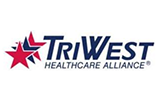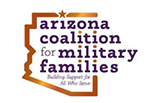
When some people hear suicide prevention, they may imagine a dramatic scene from a movie where a savior walks in at just the right moment and saves the day, in the nick of time. The reality is that these perfectly choreographed and timed moments that make for powerful drama on the silver screen, are rare in real life. Each one of us, whether we realize it or not, has the opportunity to be that hero. The day-to-day moments we are presented with where we can make a difference may not be as noticeable, but they are just as important. Each of us can help reduce suicide, especially among service members and veterans, if we embrace and adopt an upstream mindset when it comes to suicide prevention.
What is an Upstream Approach?
An upstream approach to suicide prevention is a way to leverage time and expand the opportunities for intervention from one single pivotal moment to a series of moments that might span years, months, weeks, or days. With the advantage of time to notice, reach out, engage, and connect – people experiencing increased stress, and the people who can support them, have more options. The idea behind an upstream approach is that rather than allow time to pass where a situation progresses to that pivotal point of crisis, systems, communities, people, and other support systems are there to provide access to resources and support to address situations as they arise before they escalate into a life-threatening crisis.
Easy to Say, Challenging to Implement
While upstream prevention is the goal for many efforts across the country, this approach is easier talked about than implemented. Historically, suicide prevention has focused on crisis intervention, so much of the existing efforts are oriented to that focus. While crisis intervention and treatment are absolutely essential, to make an impact on the disparity in veteran suicide rates, we need to also focus on upstream prevention. This requires a concerted effort to reach people all along the spectrum of the stress continuum and for all different social determinants of health.
Since 2017, Be Connected has worked in partnership with public and private sector organizations to move further upstream. An evaluation project with the CDC, as part of the Veteran Suicide Prevention Evaluation demonstration project, found that 85% of calls to the Be Connected support line are low acuity, meaning the caller could be assisted on the phone to connect to needed information and resources. About 14.5% were moderate acuity, meaning they needed more intensive support to navigate systems and resources. Only about 0.5% of callers required transfer to the crisis center for immediate assistance. This is an illustration of upstream prevention in action. Going into 2023, our work on risk reduction will continue to lean into upstream prevention, which is well aligned with the U.S. Department of Veterans Affairs public health approach to suicide prevention, Suicide Prevention 2.0.








